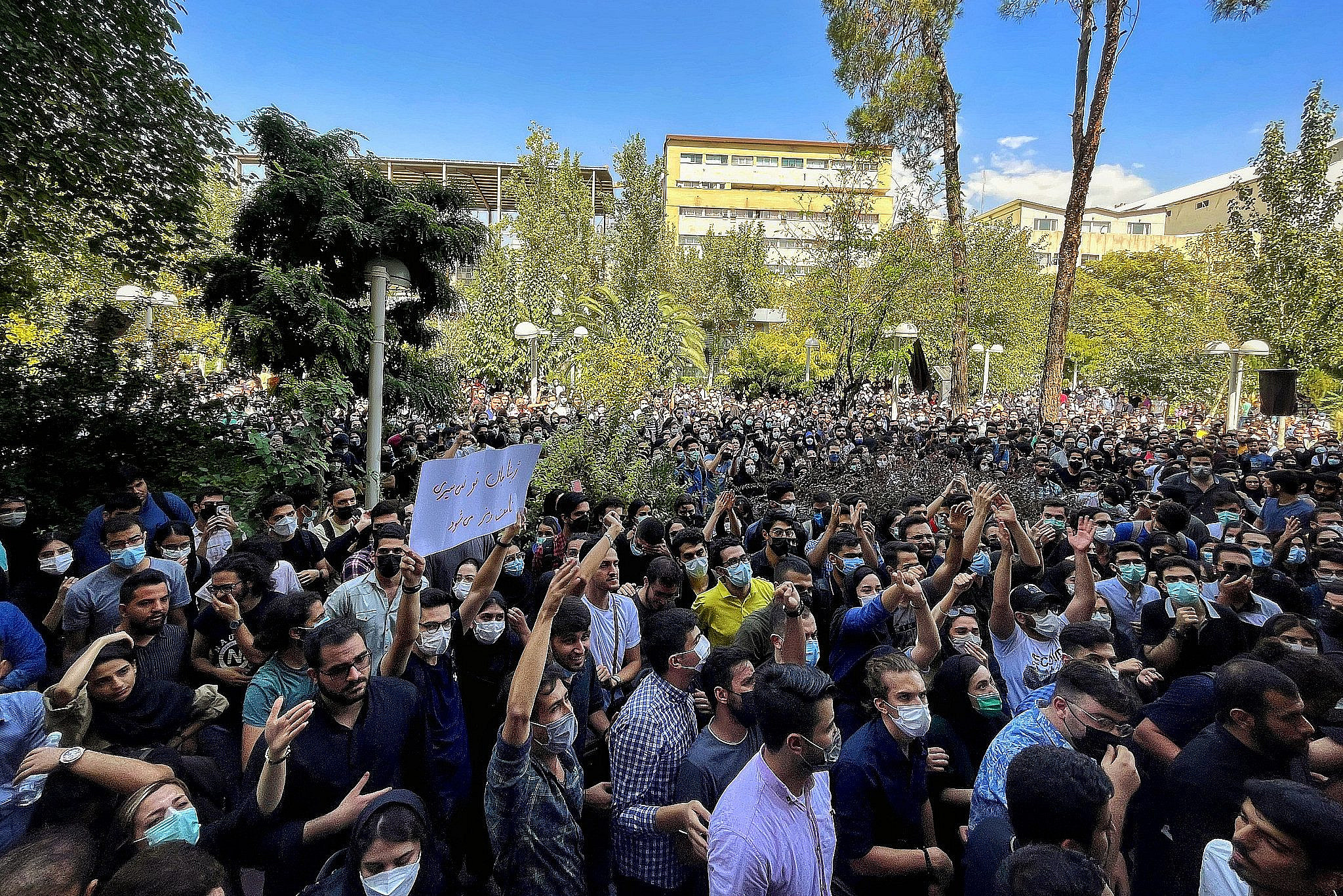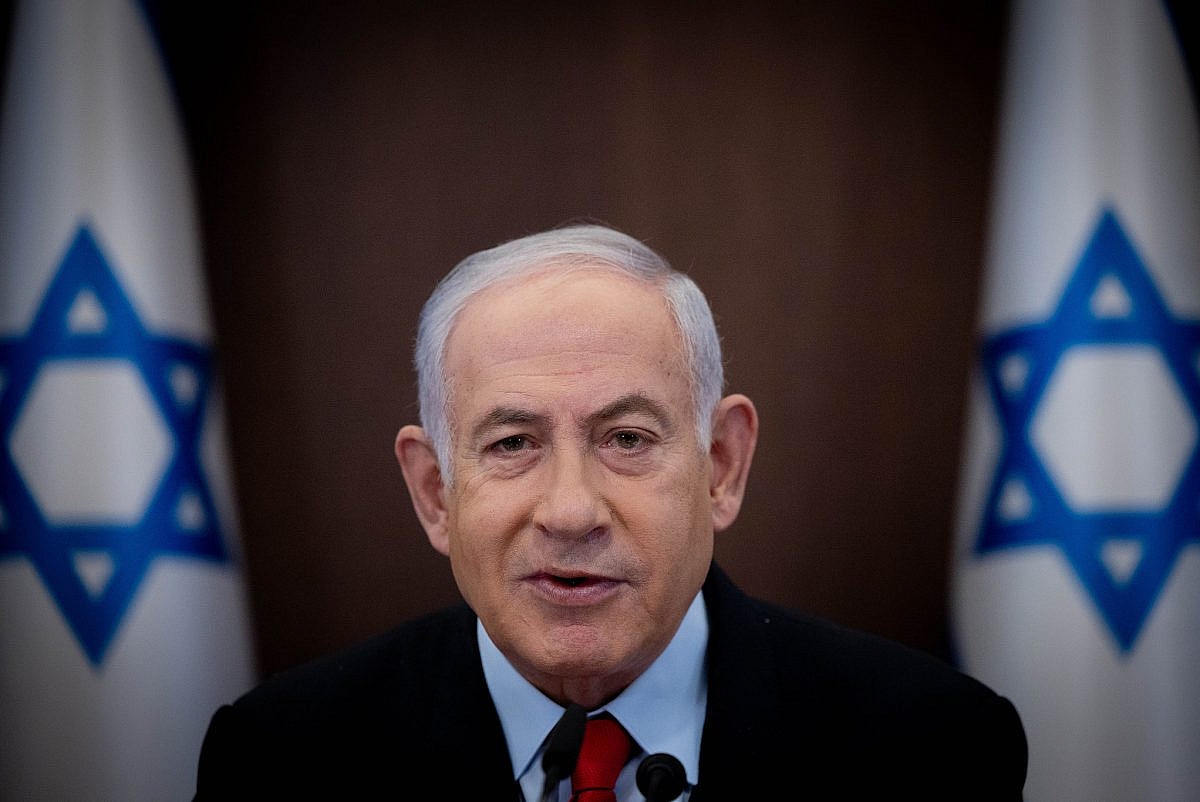This article appeared in “The Landline,” +972’s weekly newsletter. Subscribe here.
Last week, two Middle Eastern leaders left their countries to attend the 78th session of the UN General Assembly in New York, leaving scorched earth behind. The blessing for the road bestowed upon them by many of their citizens was remarkably similar: mass demonstrations denouncing the illegitimacy of their regimes. Both leaders were then greeted with cold receptions in the United States: large protests by local residents and their own country’s citizens, decrying the officials as undemocratic and dangerous rulers.
Continuing his desperate tirades against anyone opposing his authoritarian revolution at home, Israeli Prime Minister Benjamin Netanyahu claimed that the anti-government protesters are effectively “joining forces with the PLO, with Iran, and others.” But the truth is that Netanyahu bears an uncanny resemblance to one of those perceived enemies: the Iranian president, Ebrahim Raisi.
If the situations were not so tragic and perilous, the similarities between the leaders’ internal and external political circumstances, as well as their personal responses, would be comically surreal. Both Netanyahu and Raisi have confronted unprecedented waves of protests in their respective countries over the past year. Last weekend, Iran marked the anniversary of the murder of Mahsa (Jina) Amini, a 22-year-old Kurdish woman who was arrested and brutally killed by the “morality police” for the crime of wearing the hijab “improperly.” This incident ignited the “Woman, Life, Freedom” movement that has been engulfing the streets of Iran ever since, with Raisi’s trip to New York preceded by intensified demonstrations throughout the country.
Like Raisi, Netanyahu arrived in New York at a time when the ground beneath his throne is shaking. The “farewell party” held for him by protestors at Ben-Gurion Airport gave a taste of the chaos and discontent that the man has stoked following months of weekly protests against his government’s judicial coup. And just as Raisi’s trip to New York was met with demonstrations at the initiative of the Iranian diaspora, Netanyahu, too, found Israeli and American Jewish protesters awaiting his arrival.

Netanyahu’s foolish statement before his trip, tying his opponents to “the PLO and Iran,” underscores another distinct similarity between him and his Iranian counterpart: the way in which both try to delegitimize popular protests by labeling the protestors as traitors and unpatriotic, who collaborate with hostile elements in order to bring about their countries’ destruction.
Shortly after Iran’s protests erupted last year, a young singer named Shervin Hajipour released a beautiful and sad song titled “For the Sake Of,” enumerating the reasons why Iranians were taking to the streets. At the time, I quickly translated the lyrics to Hebrew and shared them on my Facebook page as a gesture of solidarity with the female Iranian protesters.
Shortly thereafter, the literary editor of a prominent Israeli newspaper contacted me about publishing the translated lyrics on their pages. After consulting with a friend, an Iranian journalist, I politely declined. At the time, the song had not yet become a protest anthem as it would later be, and I preferred not to entangle the young singer with the Iranian authorities, who could easily mobilize against him by claiming the Hebrew translation was evidence that he was cooperating with Israel.
This fear was not unfounded. In a televised interview a week after the outbreak of demonstrations, Raisi called the protesters a “deceived herd” and claimed that they were being operated by the United States, aka the Great Satan — what Iran is to Netanyahu. And much like Netanyahu, Raisi tried to counterbalance the mass protests against him by organizing “spontaneous” demonstrations in support of the regime, during which many cursed the “Woman, Life, Freedom” movement as traitors. Yes, just like Yair Netanyahu, the prime minister’s son, who called Israeli protesters “treacherous leftists.”
Most read on +972
Notwithstanding their leaders’ striking likeness, it should not be forgotten that while thousands in Israel and Iran have been taking to the streets calling for an end to tyranny, the differences between the two countries still exceed their commonalities. Unlike in Israel, where many are fighting for their version of a “Jewish state,” in Iran the masses are not asking for a pseudo-democracy which serves the majority and tramples the minority.
Therefore, if Netanyahu insists on making any parallels to Iran, instead of citing the protesters, he can look into the mirror with open eyes. To paraphrase Leo Tolstoy, democratic regimes may be democratic in their own way, but among dictators there is undoubtedly a great deal of similarity — much greater than they are willing to admit.
A version of this article was first published in Hebrew on Local Call. Read it here.






